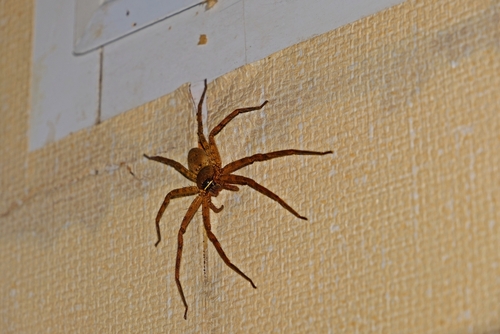
Residents of the U.S. Northeast may soon encounter an unexpected and potentially unsettling visitor: the Joro spider. Originating from East Asia, these large, colorful spiders have been steadily making their way across the southeastern United States and are now poised to expand their range northward.
The Joro spider, known scientifically as Trichonephila clavata, can grow up to three inches in size, with females being twice as large as males. Their striking appearance includes bright yellow, blue, and red markings on a predominantly yellow body, making them easy to identify.
🚨🕷️BREAKING: GIANT VENOMOUS FLYING SPIDERS COMING TO NEW YORK
The New York area is on high alert as experts predict the arrival of giant venomous Joro spiders, known for their ability to "fly".
Originating from Asia and first spotted in Georgia around 2010, these spiders have… pic.twitter.com/tCngL6W4hx
— Mario Nawfal (@MarioNawfal) June 5, 2024
First spotted in Georgia in 2014, likely brought over via shipping containers, these spiders have rapidly multiplied and spread across several states, including South Carolina, North Carolina, and Tennessee.
A unique characteristic of the Joro spider is its ability to "fly" by creating parachutes out of its webs, a process known as ballooning. This allows them to be carried by the wind for distances up to 100 miles. This mode of travel, combined with human-assisted transport, has facilitated their spread across the East Coast.
Giant venomous spiders with 4-inch-long legs and capable of flying –yes, flying– are poised to invade the East Coast this summer. The #jorospider is colorful but potential dangers are lurking beneath the beauty. #arachnids #jorospiderinvasion
MORE: https://t.co/IJo9CMhyQT pic.twitter.com/mGV8ylm8jj
— 7News DC (@7NewsDC) June 5, 2024
Despite their intimidating size and venomous nature, Joro spiders are not considered dangerous to humans. Their venom is primarily effective against small insects, posing minimal risk to people and pets. Bites, if they occur, are generally no worse than a bee sting, as their fangs are typically too small to penetrate human skin effectively.
Researchers have noted that Joro spiders are surprisingly tolerant of urban environments. Their webs, which can span up to ten feet, are often found near busy highways and residential areas. This adaptability suggests that they could become a common sight in cities across the Northeast.The ecological impact of these invasive spiders remains uncertain. While they are not aggressive towards other spider species and lack natural predators in the U.S., their proliferation could disrupt local ecosystems by competing with native species for resources.
As these spiders continue to spread, experts advise that the best course of action is to leave them undisturbed. Moving their webs out of the way can be helpful, but attempting to eliminate them is unlikely to be effective, as they are expected to return each year.
While the thought of giant, flying spiders may be alarming, the Joro spider's presence in the Northeast is more of an oddity than a threat. As they integrate into the local fauna, residents will need to adapt to these new eight-legged neighbors.










ALL spiders are venomous, it’s how they kill insects, their primary prey. But the Joro spider who hitchhiked on something to get to our Country from Asia, does NOT have a dangerous venom to humans. They may be a nuisance, but they are not deadly to humans.